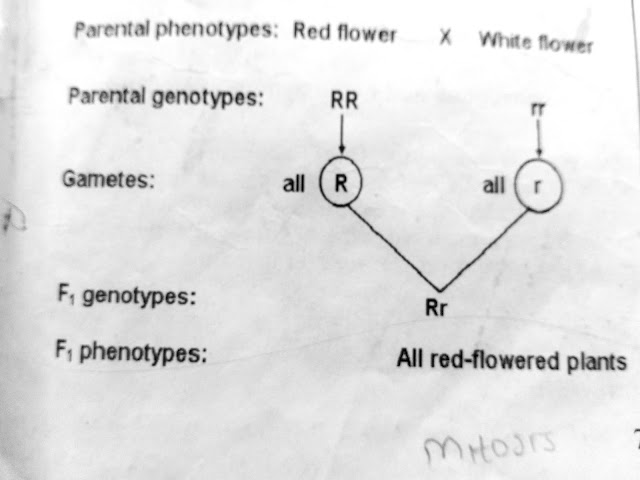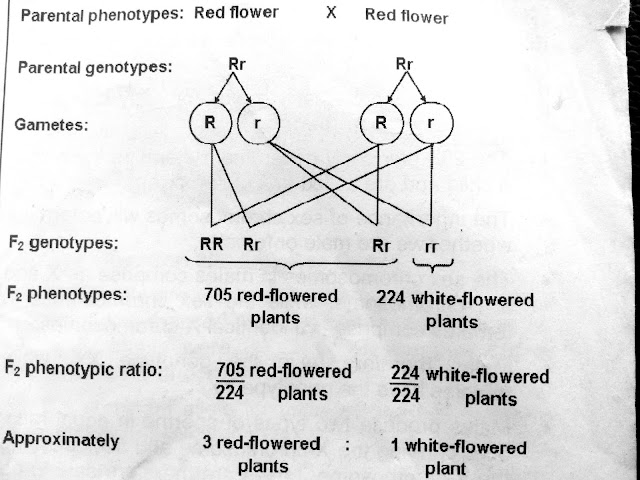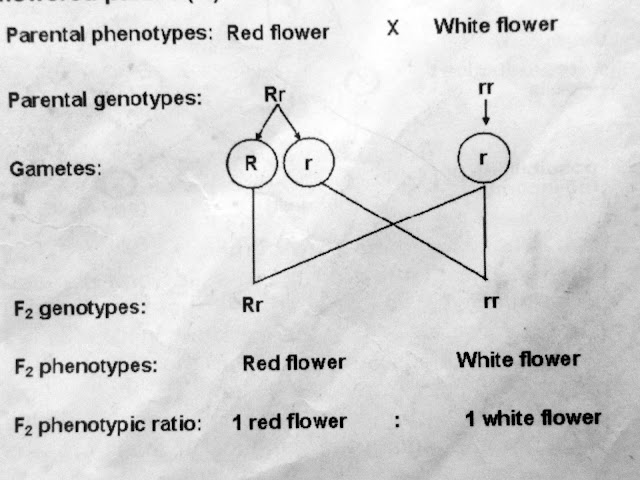GCE JUNE 1987 QUESTION 7
a) When a pure-bred red flowered plants is crossed with a pure-bred white-flowered plant, all the seeds formed produced plants bearing red flowers. When these latter red-flowered offspring were closed with each other, 705 red-flowered and 224 white flowered offspring were produced. Explain, by using diagrams and appropriate symbols the genetics of these crosses, bearing in mind that flower colour is controlled by a pair alleles.
b) What will happen if the offspring of the F1 generation were crossed with
i) A red-flowered parent, and
ii) A white-flowered parent?10 ,
c) How are chromosomes used in the determination of sex in mammals such as man? ( 11, 10, 4 )
Answer to the above questions
In man there are 46 chromosomes ( 23 homologous pairs ).
The first 22 pairs carry genes for body characters and are called autosomes.
The 23 pair carry genes that determine the sex of a child and called sex chromosomes.
The inheritance of sex chromosomes will determine whether we are males or females.
The sex chromosomes in males comprise an X and a Y -chromosome, while the sex chromosome in females comprise two identical X-chromosomes.
Males therefore have the genotype XY, while females have the genotype XX.
Males produce two types of sperms in equal ratio, 50% carrying the X-chromosomes and 50% carrying the Y-chromosomes. Males are therefore said to be heterogametic because they produce different kinds of gamete (sperms).
Females produce one kind of egg, With all carrying the X-chromosomes. They are therefore said to be homogametic ( producing only one type of gamete that is egg )
The sex of a child is determined primarily by probability or chance, and depend on the kind of sperm that fertilizes the egg.
If a sperm carrying the X-chromosomes fertilizes the egg, a female child results that is X ( sperm ) + X (egg) = XX (female offspring).
If a sperm carrying the Y-chromosome fertilizes the egg (X), a male child resulting that is Y (sperm) + X (egg) = XY (male offspring).
Therefore, there is an equal probability or chance of producing a male child as shown below:




